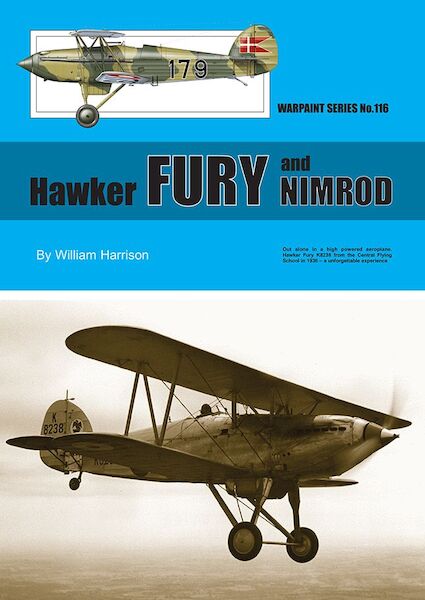
- aviationmegastore.com
- aviationoutletstore.com
- Ship to United States
Quick Search – Outlet Store
Aviation Outlet Store
categoriesHawker Fury, Hawker Nimrod
Product code ws-116
Hawker
€ 17.39
Series Warpaint Series No 116
Publisher/Brand Hall Park
Author William Harrison
Format a4
No. Pages 125
Version Soft cover
Language English
Category Aviationbooks
Subcategory WW2 UK » WW2 UK Aircraft
Availability only 1 remaining
This product was added to our database on Monday 23 july 2018.
Your reliable Aviation Book Source since 1989
Also in this series:
| product | Publisher/Brand | Series/scale | Price € | ||
 | Aermacchi MC202-205 Folgore - Veltro | Hall Park | Warpaint Series No 78 | € 14.63 | |
 | Avro York | Hall Park | Warpaint Series No 98 | € 18.30 | |
 | Bristol Blenheim | Hall Park | Warpaint Series No 26 | € 14.63 | |
 | Douglas A20 Boston / Havoc | Hall Park | Warpaint Series No 32 | € 15.55 | |
 | Douglas C47 Skytrain/Dakota | Hall Park | Warpaint Series No 133 | € 30.23 | |
 | Ilyushin IL28 "Beagle" | Hall Park | Warpaint Series No 130 | € 20.14 | |
 | Lockheed F117 Nighthawk | Hall Park | Warpaint Series No 138 | € 20.14 | |
 | Savoia Marchetti SM79 Sparviero | Hall Park | Warpaint Series No 61 | € 13.72 | |
 | Short Stirling | Hall Park | Warpaint Series No 15 | € 16.47 | |
 | Vought OS2U Kingfisher | Hall Park | Warpaint Series No 111 | € 15.55 |
Product description
The first RAF front line fighter to achieve more than 200 mph was the Hawker Fury, and its naval counterpart the Hawker Nimrod. These two attractive fighters came from the design office of the late Sydney Camm, Hawker's chief designer. The Fury started life as a private venture known as the Hornet but when this machine exceeded expectations the name was changed to Fury. Although only ordered in small numbers owing to financial constraints during the Great Depression production eventually exceeded 260 machines with orders from the RAF, Royal Navy, Persia (now Iran), Portugal, Spain, Yugoslavia and more than 30 supplied (ex-RAF) to the South African Air Force. The Fury entered service with No.43 Squadron who accepted 16 during May 1930 and stayed in front line service until January 1939 when it was replaced by the Gloster Gladiator, although quite a few remained in the training role until mid-1941. The Furies were used in combat during WWII by Yugoslavia where they were quickly despatched by the more modern fighters of the Luftwaffe. South Africa used Furies in the East African war until 1941 and the three supplied to Spain were in action, one of them serving on both sides! The Nimrod, while bearing a distinct resemblance to the Fury, flew early in 1930. Changes for the RN included longer exhaust pipes extending down both sides of the fuselage as far as the pilot's cockpit; an oil cooler fitted beneath the engine bay and at a later date arrester gear was fitted for carrier use. Later series Nimrods featured a larger tail surface to improve inverted spinning characteristics when fitted with floats. Deliveries of Nimrods started in September 1933 and they remained in use until May 1939. Only a small number of Nimrods found their way abroad, two went to Denmark to act as pattern aircraft for licensed production, one was shipped to Japan and one to Portugal. Although one Fury managed to survive in the scrapyard of a London dealer it fell to John Isaacs, a draughtsman from Vickers Armstrong, to design and build both a 1/7th scale Fury and Spitfire, both of which continue to be built by members of the Light Aircraft Association, née the Popular Flying Association. This book is written by William Harrison and is superbly illustrated by Richard J.Caruana.
Shopping cart
Your shopping cart is empty.
Login
Already a customer on our main website AviationMegastore.com? Your login is also valid in the outlet store.
- aviationshopsupplies.com
- aviationmegatrade.com
© 1989–2025 Luchtvaart Hobby Shop B.V.